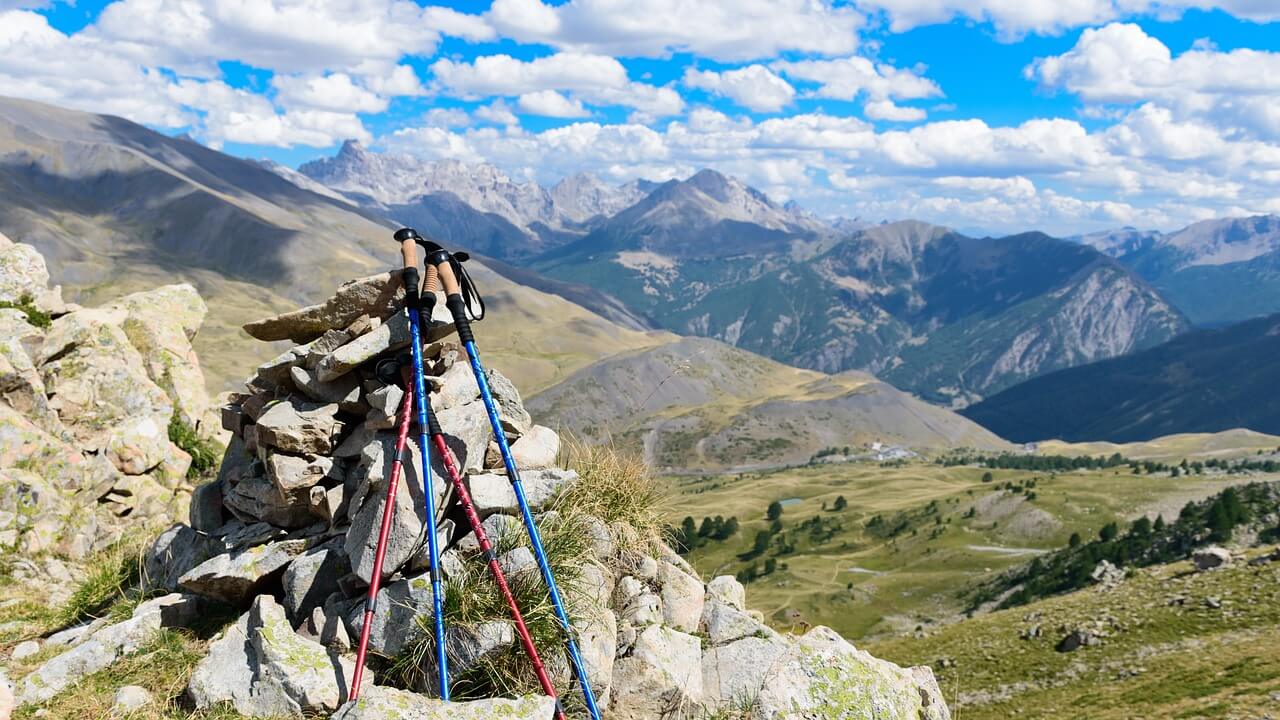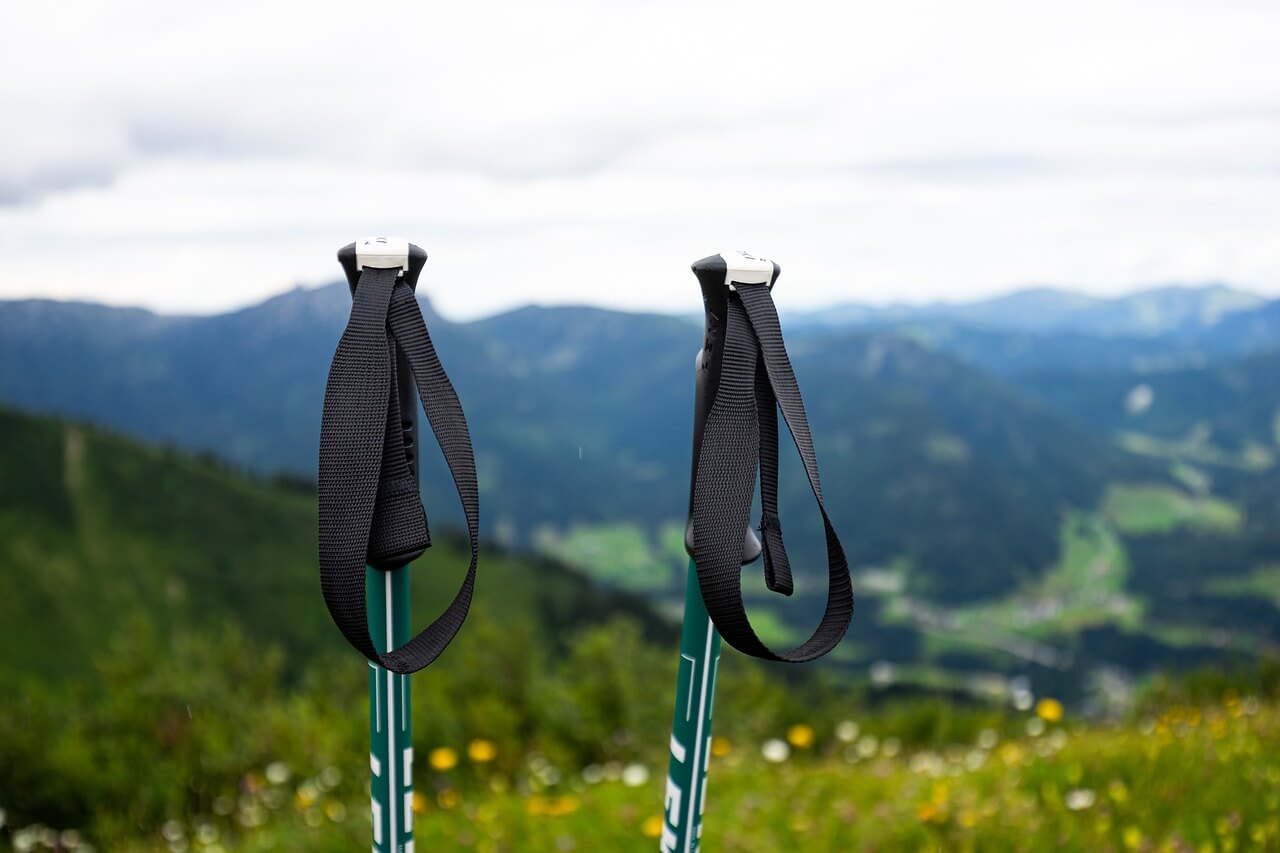
Guide for trekking
How to choose right trekking poles
Tips needed for successful trekking
Trekking poles have become a necessity among day hikers, backpackers, and trail runners. This is because it increases stability and provides support on rough terrain, reducing the impact on the feet, ankles, knees, and lower back.
As the popularity of trekking poles has increased, the number of companies manufacturing trekking poles has increased, but for consumers, choosing the right trekking poles has become difficult as the number of products has increased. Depending on your physical condition, hiking style, and destination, the material, grip, length, and weight of the pole will vary.
The following is what to consider when choosing trekking poles.
Table of Contents
1. Pole Material :
Trekking poles are mainly made of aluminum or carbon fiber. Aluminum poles are durable and inexpensive but are a bit heavy. Carbon fiber poles are lighter and can reduce the impact transmitted to the arm, but they are more expensive and less durable in certain conditions.
2. Adjustability:
Adjustable trekking poles allow you to change the length of the pole depending on the terrain. It is helpful to adjust it to be shorter when going uphill and longer when going downhill.
– Telescoping poles : Telescoping poles adjust in length by sliding sections into one another. Typically consisting of 2-3 sections, they are adjusted by twisting the sections to lock or unlock, allowing for length adjustment. Telescoping poles are known for their durability and ease of adjustment, making them versatile for varying terrains. However, they tend to be heavier and longer when collapsed compared to folding poles, which might make them less convenient for packing.
– Folding poles : Folding poles are designed with several sections connected by a cord or cable, similar to tent poles, and collapse to a very short length. When expanded, the sections snap together automatically, with minimal adjustment allowed by a locking mechanism to secure the desired length. The main advantages of folding poles are their portability and lightweight, making them ideal for light hiking or running. They are more compact when collapsed, offering easier storage. However, they may offer less adjustability and slightly less durability than telescoping poles due to their design.
The choice between telescoping and folding poles depends on the user’s needs and preferences. Telescoping poles are suitable for those who value adjustability and sturdiness, while folding poles are better for those prioritizing portability and lightness. It’s important to consider your hiking style and the environments you’ll be using the trekking poles to select the type that best suits your needs for first trekking.

3. Locking Mechanisms :
– There are several locking mechanisms for adjustable trekking poles, including twist locks, lever locks, and push-button locks. Lever locks are generally more reliable and easier to use, especially with gloves.
– Twist Locks: These work by twisting the sections of the trekking pole in opposite directions to lock them at the desired length. A friction fit keeps the sections from sliding. To adjust the pole, you twist in the opposite direction to loosen the sections. Twist locks are simple and have been used for a long time, but they can lose their holding power if dirt or debris gets inside the mechanism.
– Lever Locks (also known as External Locks or Clamp Locks): These locks have a lever-based mechanism that you flip open to adjust the pole and close to lock the pole in place. They tend to be more user-friendly and more reliable than twist locks, especially in cold weather or when wearing gloves. Lever locks are also easier to maintain and more likely to hold their position even with heavy use or if they become dirty.
– Push-button Locks: These locks use a spring-loaded button that pops out through a hole in the pole sections to lock them in place. To adjust the pole, you press the button to release the lock and slide the pole to the desired length. Push-button locks are quick and easy to use, but they may not provide as fine-tuned an adjustment as twist or lever locks.
– Combination Locks: Some poles use a combination of the above locking mechanisms, such as a twist lock for minor adjustments and a lever lock for the main adjustment.
– Slide Locks: These are less common and consist of a sleeve that you slide up or down to expose or cover holes into which a pin or button snaps to lock the pole’s length.
**When choosing trekking poles, consider the type of locking mechanism in terms of ease of use, reliability, and suitability for the conditions in which you’ll be hiking. For example, lever locks might be better for cold environments, while twist locks could be more prone to issues if they get clogged with mud or sand.
4. Grip Materials:
Grips can be made from foam, cork, or rubber. Cork grips conform to your hands over time and absorb some sweat, foam grips are soft and absorb vibration, and rubber grips are durable and good for cold weather but can be uncomfortable in warm weather.
5. Weight:
Lighter poles reduce arm fatigue but might not be as durable as slightly heavier ones. Consider the balance between weight and durability based on the type of hiking or trekking you plan to do.
6. Other things to consider:
– Pole Tips: The tips of trekking poles can vary in material, with carbide or steel tips being common. Some poles come with interchangeable tips for different terrains or protective rubber tips for use on hard surfaces.
– Snow baskets : Check for additional features like mud/snow baskets that can be attached to the poles to prevent them from sinking into soft ground.
**reference sites :https://www.backcountry.com/https://www.treelinereview.com



